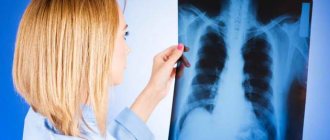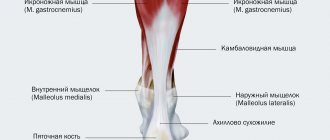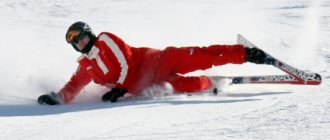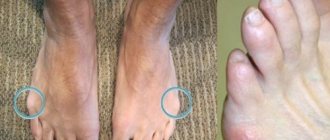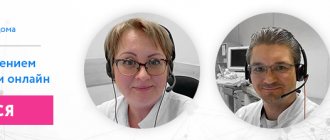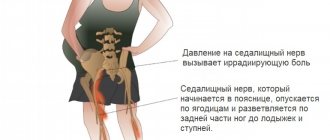Almost everyone has had to deal with painful sensations in the spine. Usually appears in the lumbar region, in rare cases in the cervical region. Under the influence of certain factors, pain between the shoulder blades may also occur.
Most often, people ignore this pain syndrome and simply take a painkiller to eliminate it. However, this symptom may indicate the development of serious diseases that require quick help. You should not ignore such sensations, even when they are insignificant. If pain occurs between the shoulder blades, you should consult a doctor and undergo an examination, and then treatment of the spine.
Factors contributing to pain between the shoulder blades
Painful sensations in the interscapular area can occur against the background of some vertebral pathologies:
- osteochondrosis of the thoracic region;
- problems with posture (kyphosis, scoliosis, kyphoscoliosis);
- spondyloarthrosis;
- humeroscapular periarthrosis;
- protrusion and intervertebral hernia in the thoracic region;
- intercostal neuralgia;
- radiculitis;
- spinal column injuries.
Problems in the functions of the spine can develop:
- during sedentary work;
- in the absence of sports;
- under significant loads for which the body is not ready.
More than one spine may be the source of the problem. Painful manifestations may occur against the background of disturbances in the functioning of internal organs. For example, the presence of cardiac pathologies: angina pectoris, coronary artery disease.
In addition, pain syndrome can develop against the background of:
- hepatitis A;
- cholecystitis;
- peptic ulcer in the stomach;
- pulmonary diseases;
- infectious pathologies.
Often, people who move little due to the specific nature of their work activity have to face a similar problem, since their muscular and ligamentous systems are weakened, and the muscle fibers in the shoulder girdle are tense for a long time. Such pain often bothers drivers, garment factory workers, etc.
What to do when your back hurts from coughing?
If a person feels discomfort in the back, in a specific area on the back, then he should analyze the nature of the pain with a doctor. The doctor will be able to fully assess the danger of the symptom. Self-medication is fraught with blurring the clinical picture, which leads to loss of time and delay in providing the person with the necessary help.
Who should you contact when your back hurts in the area of your shoulder blades when you cough?
There are several options:
- therapist;
- neurologist;
- surgeon;
- vertebrologist;
- pulmonologist
Traditionally, patients first turn to their primary care physician due to the occurrence of a corresponding symptom, which progresses during treatment of respiratory disorders.
To determine the cause of the problem, the doctor analyzes the person’s complaints, assesses the nature, type and time of occurrence of the symptom. The maximum discomfort for the patient is caused by a dry, unproductive, hacking cough.
Clarifying the diagnosis requires the following procedures:
- ECG is a method for assessing heart function;
- X-ray of the chest organs. The procedure is necessary for pathologies of the lungs and pleura;
- Ultrasound of the abdominal organs and kidneys. An examination should be done if calculous cholecystitis, pyelonephritis, acute pancreatitis is suspected;
- Laboratory tests of blood and urine.
In difficult diagnostic cases, computed tomography and magnetic resonance imaging are prescribed - expensive methods of visualizing the internal structures of the body. With the help of these measures, it is possible to accurately determine the localization of the pathological area.
- Rheumatoid arthritis of the spine
The nature of pain in an adult patient and a child may differ. For differential diagnosis of relevant pathologies in children, consultation with a pediatrician is required.
Important! You should not treat back pain on your own. To effectively eliminate a symptom, it is necessary to accurately determine the root cause of the problem. Therapy uses drugs aimed at eliminating specific pathological conditions. In this situation, you cannot do without consulting a doctor.
Nature of pain
When contacting a doctor, the patient must describe in detail the pain he is experiencing. This will help make the diagnosis easier.
The duration of the pain syndrome can be:
- acute course - characterized by a sudden appearance and the same disappearance;
- chronic course - the sensations are usually mild, aching in nature, disturbing for a long time.
Painful sensations in the interscapular region near the sternum may indicate the presence of an intervertebral hernia, scoliosis or kyphosis. The severity of pain varies. In the mornings they usually do not bother you, but in the evening hours they begin to increase. In the morning, pain may bother you with osteochondrosis, when the patient was resting in an uncomfortable position. Discomfort increases while turning the head.
When pain between the shoulder blades is caused by coronary heart disease, taking nitroglycerin should help relieve it. Against the background of pulmonary pathologies, elevated temperature, cough, and intoxication are observed. Pain that appears when inhaling during a cough may indicate intercostal neuralgia. Painful sensations of a girdling, paroxysmal nature. When you feel the damaged area between the shoulder blades, a feeling of pain appears. The pain increases with physical activity and when walking.
Painful manifestations during inhalation can also occur with pulmonary diseases. In this case, the patient notes the occurrence of general weakness, fatigue, and possibly lack of appetite. If the pain syndrome in the shoulder blade on the right increases, even during a shallow inhalation, the development of a diaphragmatic abscess can be suspected.
The appearance of sharp pain indicates an inflammatory process or infringement of nerve receptors. An increase in pain when tilting the head indicates inflammation of the muscle tissue and damage to the ligamentous tissue in the interscapular region.
Pulling, dull pain is characteristic of problems with ligaments and the musculoskeletal system (with osteochondrosis of the thoracic or cervical region, myofascial syndrome). An aching pain syndrome almost exclusively indicates the presence of problems with the spine (kyphoscoliosis, fibromyalgia, spondyloarthrosis, etc.).
When painful sensations are associated with eating food, the source of the problem is dysfunction in the digestive tract (ulcer). Against the background of this pathology, a Ranitidine tablet or a warm heating pad applied to the back area will help relieve discomfort. In addition, this disease is accompanied by nausea, vomiting, heartburn, and flatulence.
In pregnant women, pain is often caused by an increase in the load on the spine. To eliminate it, it is usually enough to just rest. If you experience rapid fatigue or an increase in temperature, you may suspect the development of more serious problems (for example, pyelonephritis, pneumonia).
Associated symptoms
To facilitate diagnosis, it is necessary to describe in detail the nature of the pain.
Pain under the right shoulder blade when inhaling or exhaling can be local in nature. The symptom is localized in a small point or becomes radiating, responding to organ diseases. It is very difficult to recognize referred pain without instrumental examination.
The nature of the symptoms may be different: increasing, paroxysmal, intensifying. This is inherent in inflammatory processes, angina pectoris. Dull sensations often develop in diseases of the musculoskeletal system.
There are other pains: nagging, stabbing, constant. They accompany digestive disorders and muscle pathologies. Shooting is characteristic of disorders in the vertebrae and nerve endings.
Symptoms accompanying painful manifestations
Using additional signs, you can quickly identify the cause of pain between the shoulder blades.
A feeling of numbness in the back appears against the background of:
- osteochondrosis;
- curvature of the spinal column;
- humeroscapular periarthritis;
- pleurisy;
- cardiac ischemia;
- biliary dyskinesia.
The appearance of itching in the back area is characteristic of diseases such as herpes zoster and biliary colic. If a feeling of chills occurs, we can talk about an exacerbation of pyelonephritis or infringement of nerve receptors in the spinal canal.
High temperature is characteristic of pathologies of internal organs:
- pancreatitis;
- pneumonia;
- tuberculosis;
- hepatitis;
- cholecystitis;
- jade.
Cough syndrome in combination with pain in the interscapular area appears against the background of problems with the lungs and bronchi. A typical symptom of impaired pulmonary function is difficulty breathing.
The appearance of vomiting is characteristic of peptic ulcers in the stomach, liver and kidney diseases, and myocardial infarction. The appearance of belching may indicate damage to the upper digestive tract.
Pain in the interscapular region is only a symptom. To achieve positive results and eliminate discomfort, you need to begin treating the underlying disease.
Complex therapy
The treatment method is characterized by an established diagnosis. Pain under the shoulder blade in the back and its therapy are aimed at removing the root causes:
- If there is pain between the shoulder blades when coughing due to inflammation in the lungs, then antibiotics, antiviral, and anti-inflammatory drugs are prescribed. Doctors prescribe bronchodilators and mucolytics as auxiliary agents.
- If the shoulder blades hurt when coughing due to diseases of the spine, then painkillers are used for therapy, as well as medications that relieve inflammation.
- If there are symptoms of an acute infarction, the patient is urgently hospitalized for complex therapy in an intensive care unit.
- For tumors of various kinds, doctors relieve pain, diagnose the tumor, and then select treatment tactics.
- If a vertebra or thoracic area is injured, urgent surgery is possible.
- To treat heart disease, painkillers, drugs to protect the heart muscles, and bed rest are prescribed. Therapy is carried out in a hospital setting under the guidance of a doctor.
Pain between the shoulder blades and in the back can lead to serious consequences and death. Symptoms cannot be underestimated; self-relief of discomfort is also prohibited. As soon as coughing and discomfort in the back begin, you should immediately seek medical help. The sooner the causes are identified and treated, the better the prognosis.
- Rheumatoid arthritis back symptoms treatment
Effective therapeutic techniques
After determining the root cause of interscapular pain, the patient may need to consult with a cardiologist, neurologist, or gastroenterologist. Until you receive medical help, you can try to relieve the pain syndrome on your own; you should not endure it for long. There are some harmless methods to relieve pain.
Gymnastic exercises
A gymnastics complex will help relieve discomfort:
- We place our palms on our shoulders and perform several circular movements back and forth.
- We raise our palms to the top, then our arms completely, lock them together, lower our heads, and concentrate our gaze on the fingers.
- We bring and spread the shoulder blades.
- We perform body turns alternately to the right and left.
Medicines
Taking medications without medical advice is contraindicated, as this may worsen the situation.
In cases where the cause of pain in the intervertebral region is associated with spinal diseases, the doctor may prescribe treatment with drugs from the NSAID group:
- Diclofenac;
- Indomethacin;
- Movalis;
- Ibuprofen;
- Nimesulide;
- Meloxicam;
- Naproxen;
- Voltaren, etc.
As an auxiliary therapy, the affected area can be treated with external agents: Fastum gel, Capsicam, Amelotex, Nise gel.
After the pain has eased, you can resort to local medications with an irritating effect:
- Efkamena;
- Menovazina;
- Finalgona.
Therapeutic measures in a hospital setting
It is not recommended to treat yourself. It is better to seek the help of specialists and undergo complex treatment, which will be selected by the doctor according to an individual scheme.
Complex therapy involves the use of medications in combination with physiotherapeutic procedures and therapeutic exercises.
If there is an inflammatory process, the doctor prescribes a course of NSAIDs (Movalisa, Dicloberla). To eliminate muscle spasms, muscle relaxants (Baralgin, Mydocalm, Sirdalud) are indicated. When the cause of pain in the interscapular area lies in problems with internal organs, the doctor selects medications from certain pharmacological groups. In this case, antibiotics, hepatoprotectors, diuretics, analgesics, etc. are indicated.
Along with medications, physiotherapeutic procedures may be recommended:
- laser therapy;
- acupuncture;
- electrophoresis using lidase and novocaine;
- massage;
- magnetic therapy.
The gymnastic complex is prescribed on an individual basis, taking into account the characteristics of the pathology, the nature of the pain, and the patient’s well-being.
III. Is it necessary to conduct additional research methods?
At the appointment, the doctor, after assessing your condition (clinical picture) and medical history, makes a conclusion about the need or lack thereof for additional research methods. In most cases, if the pain syndrome is benign, the diagnosis is made based on the patient’s clinical picture. If there are “red flags”, depending on the conditions that the doctor wants to exclude, additional research methods may be prescribed, such as a blood test for inflammatory markers, tumor markers, MRI, computed tomography, radiography, or referred for consultation to a specialized specialist.
Adviсe
Since the cause of pain is often spinal diseases, in order to keep the spine healthy, it is recommended:
- try not to stay in one position for a long time;
- play sports (but in moderation);
- avoid hypothermia;
- ensure uniform load distribution;
- do not strain muscle tissue too much;
- ensure that your diet is balanced.
Pain in the interscapular area can indicate the development of many diseases. This can be either a disease of the spinal column or problems with internal organs. It is impossible to determine the source of the problem on your own. To do this, you need to consult a doctor, undergo an appropriate examination and begin treatment prescribed by the doctor.
